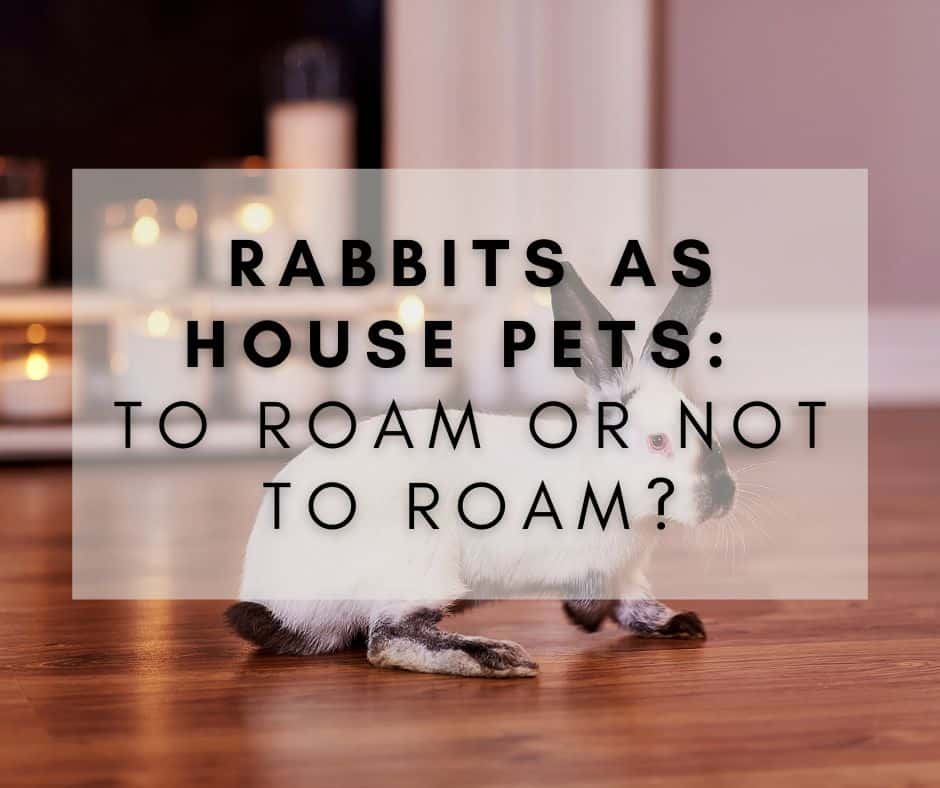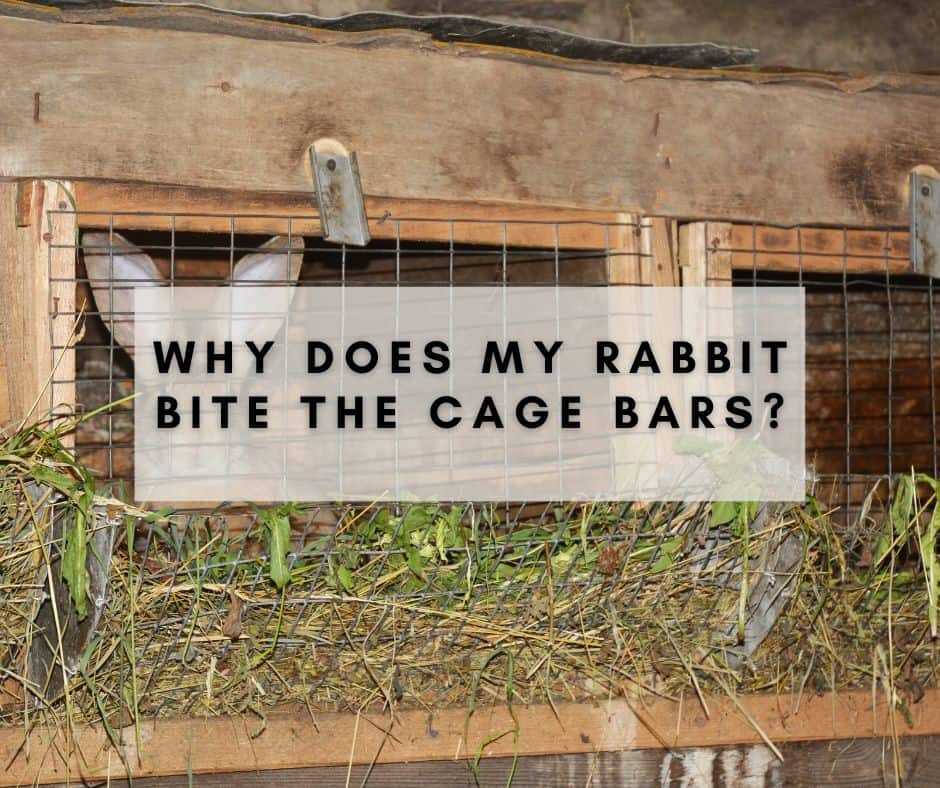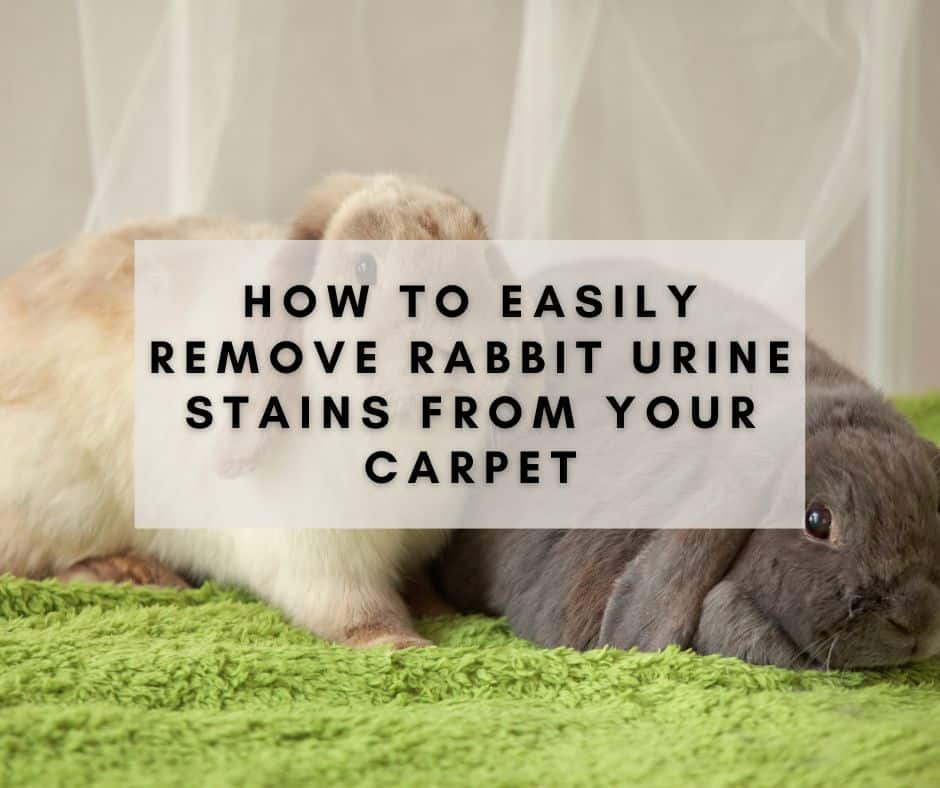Many rabbit owners often wonder whether they should let their furry friends roam free in the house. While rabbits can make great indoor pets, it’s important to consider the pros and cons of giving them free rein. On the one hand, allowing rabbits to roam free can give them more exercise and mental stimulation. On the other hand, there are potential risks to both the rabbits and the house itself.
As a matter of fact, one of the main benefits of letting rabbits roam free is that they can get more exercise and mental stimulation. Rabbits are naturally active animals and need plenty of opportunities to move around and explore.
Giving them free rein in the house can provide them with a larger space to run, jump, and play. Additionally, rabbits are social creatures and enjoy interacting with their owners, so having them roam free can give them more opportunities for socialization. However, it’s important to ensure that the house is safe for rabbits and that they cannot access any dangerous items or areas.
Contents
Benefits of Free Roaming
Allowing rabbits to roam free in the house can have several benefits for both the rabbits and their owners. Here are some of the advantages of free roaming:
Exploration and Exercise
Rabbits are naturally curious animals and enjoy exploring their surroundings. Free roaming allows them to move around and investigate their environment, which can help keep them mentally stimulated and prevent boredom. Additionally, free-roaming can provide rabbits with more opportunities for exercise, which is important for their physical health.
Reduced Boredom and Territorial Behavior
When rabbits are confined to a cage or limited space, they may become bored and restless. This can lead to territorial behavior, such as chewing on furniture or other objects. Free roaming can help reduce boredom and give rabbits more space to move around, which can in turn reduce negative behaviors.
Healthy Weight and Reduced Obesity
Free roaming can also help rabbits maintain a healthy weight and reduce the risk of obesity. When rabbits have more space to move around, they are more likely to engage in natural behaviors such as hopping and running, which can help burn calories and maintain a healthy weight.
Overall, free roaming can provide several benefits for rabbits and their owners, including increased exploration and exercise, reduced boredom and territorial behavior, and improved physical health. However, it is important to ensure that the environment is safe and free of potential hazards before allowing rabbits to roam free.

Precautions to Take
When considering letting rabbits roam free in the house, it is important to take necessary precautions to ensure their safety and prevent damage to household items. Here are some precautions to take:
Bunny Proofing Your House
Before letting rabbits roam free in the house, it is important to bunny-proof the house. This involves identifying potential hazards and taking steps to minimize them. Here are some tips for bunny-proofing your house:
- Chew-Proof Furniture: Rabbits love to chew on furniture, so it is important to choose furniture that is chew-resistant. Alternatively, you can cover furniture with chew-proof materials.
- Protect Baseboards: Rabbits also love to chew on baseboards. You can protect them by covering them with plastic guards or puppy pens.
- Hide Wires and Cords: Wires and cords can be dangerous if chewed on. Hide them or cover them with cord protectors.
- Remove Toxic Items: Rabbits are sensitive to toxic substances, so it is important to remove any toxic items from the house. This includes household cleaners, poisonous plants, and toxic foods.
- Provide Toys and Chews: Rabbits need to chew, so it is important to provide them with toys and chews to keep them occupied.
- Block Off Unsafe Areas: Use baby gates or adjust your household objects to block off unsafe areas for your rabbits.
- Protect Rugs: Rabbits can dig and chew on rugs, so it is important to protect them by covering them with plastic or removing them altogether.
By taking these precautions, you can ensure that your rabbits are safe and happy while roaming free in the house.
Litter Training
Litter training is an essential part of keeping rabbits indoors. Rabbits naturally use one area of their living space as a toilet, and litter training takes advantage of this. Here are some tips to help with litter training:
- Start litter training as soon as possible. The younger the rabbit, the easier it is to train them.
- Use a litter box that is big enough for the rabbit to comfortably sit in. Rabbits like to have enough space to move around.
- Use litter that is safe for rabbits. Avoid clay or clumping litter, as these can be harmful if ingested. Paper, wood, or hay-based litter is a good option.
- Place the litter box in the area where the rabbit naturally goes to the toilet. This is usually a corner of the room.
- If the rabbit starts to go outside of the litter box, move the droppings to the litter box to help them understand where they should go.
- Reward the rabbit with treats or praise when they use the litter box correctly.
It’s important to note that not all rabbits will be fully litter trained. Some may have accidents, especially during hormonal changes or stressful situations. It’s important to be patient and consistent with litter training and to clean up any messes promptly to discourage the rabbit from going into that area again.
Overall, litter training can make living with a rabbit indoors much easier and cleaner. With patience and consistency, most rabbits can be successfully litter trained.
Creating a Safe Space
When considering free-roaming rabbits, creating a safe space is crucial. Rabbits are curious creatures that love to explore, but they can also be mischievous and destructive. Therefore, it’s essential to ensure that your rabbit has a designated area where it can roam around without getting into any trouble.
Transitioning to Free Roam
Before allowing your rabbit to roam free, it’s essential to make sure that they’re ready for it. Start by giving them supervised access to a small area in the house. This could be a room or a pen where they can play and explore. Gradually increase the space as they become more comfortable with their surroundings.
It’s also important to rabbit-proof your home before allowing your rabbit to roam free. This includes hiding electrical cords, covering up any exposed wires, and removing any toxic plants or substances. Additionally, make sure that there are no small spaces where your rabbit can get stuck or hurt themselves.
Home Base
Creating a home base for your rabbit is another important aspect of creating a safe space. This could be a rabbit cage or a designated area where they can retreat when they feel overwhelmed or scared. Make sure that their home base is comfortable and has plenty of space for them to move around.
Redirect
Rabbits are natural chewers, and they love to nibble on things. To prevent your rabbit from destroying your furniture, provide them with plenty of chew toys and hay. This will redirect their chewing behavior and keep them occupied.
Carpets
If you have carpets in your home, it’s important to keep an eye on your rabbit to ensure that they’re not chewing on them. Rabbits love to dig and burrow, and carpets can be tempting for them. If you notice that your rabbit is chewing on your carpets, redirect them to a more appropriate chew toy.
Neutering/Spaying
Finally, neutering or spaying your rabbit can help to reduce its destructive behavior. This will also prevent any unwanted litter and help to keep your rabbit healthy.
In conclusion, creating a safe space for your free-roaming rabbit is essential. By following the tips outlined in this section, you can ensure that your rabbit is happy, healthy, and safe in your home.
Feeding and Watering Your Free Roam Bunny
When it comes to feeding and watering your free roam bunny, it is important to ensure that they have access to fresh food and water at all times. Rabbits have a sensitive digestive system, so it is essential to provide them with the right kind of food and water to keep them healthy.
Food
Rabbits require a diet that is high in fiber and low in fat. Hay is an essential part of their diet, and they should have access to it at all times. Timothy hay is a good choice for adult rabbits, while alfalfa hay is suitable for young rabbits. Fresh vegetables and fruits should also be a part of their diet, but they should be given in moderation. Some good choices include:
- Carrots
- Broccoli
- Kale
- Apples
- Blueberries
It is important to introduce new foods slowly to avoid upsetting their digestive system. If your rabbit has any health issues, such as dental problems or gastrointestinal issues, you should consult with a veterinarian to determine the appropriate diet.
Water
Water is essential for rabbits, and they should have access to fresh, clean water at all times. A water bottle or bowl can be used to provide water, but a bottle is preferred as it helps to prevent contamination. It is important to clean the water bottle or bowl regularly to prevent the growth of bacteria.
In conclusion, feeding and watering your free roam bunny is an essential part of keeping them healthy. Providing them with a diet that is high in fiber and low in fat, along with fresh, clean water, will help to ensure that they live a happy and healthy life.
FAQs
Many people have questions about letting their rabbits roam free in the house. Here are some frequently asked questions and answers:
Q: Is it safe to let rabbits roam free in the house?
A: It can be safe to let rabbits roam free in the house, but it depends on a few factors. First, you need to make sure your house is rabbit-proofed. This means removing anything that could be harmful to your rabbits, such as electrical cords, toxic plants, and small objects that could be swallowed. You also need to supervise your rabbit to make sure they don’t get into any trouble.
Q: Do rabbits need a cage if they roam free in the house?
A: No, rabbits don’t necessarily need a cage if they roam free in the house, but they do need a designated space that is just for them. This could be a pen or a small room that is rabbit-proofed. Rabbits need a place to retreat when they feel scared or overwhelmed, and they also need a place to sleep and eat.
Q: Can rabbits be litter trained?
A: Yes, rabbits can be litter trained, and this is an important part of letting them roam free in the house. You will need to provide a litter box that is big enough for your rabbit to turn around in, and you will need to place it in a location that is easy for your rabbit to access. You can use a litter made from paper or wood pellets, and you will need to clean the litter box regularly.
Q: Do rabbits need exercise if they roam free in the house?
A: Yes, rabbits need exercise, even if they roam free in the house. They should have access to a large space where they can run and play, and they should also have toys and other enrichment activities to keep them mentally stimulated. You can also take your rabbit outside for supervised playtime in a secure area.
Q: What are the benefits of letting rabbits roam free in the house?
A: Letting rabbits roam free in the house can provide many benefits, including improved physical and mental health, increased socialization, and a better quality of life. Rabbits are social animals that need interaction with their owners, and they also need space to move around and explore. Allowing them to roam free in the house can help meet these needs.
Conclusion
In conclusion, allowing pet rabbits to roam free in the house can be a controversial topic. While it can be a fun and enriching experience for both the rabbit and the owner, it also comes with certain risks and responsibilities.
For those considering free-roaming their pet rabbit, it is important to keep in mind the following:
- Rabbits are prey animals and may be easily frightened by sudden movements or loud noises, which can lead to stress and potential health issues.
- Free-roaming rabbits may chew on furniture, wires, and other household items, which can be dangerous for both the rabbit and the house.
- Rabbits can be litter trained, but accidents can still happen, and it is important to be prepared for cleaning up after the rabbit.
- Other pets, such as cats, may see the rabbit as prey and cause harm to the rabbit.
- Rabbits need plenty of exercise and mental stimulation, which can be achieved through free-roaming or a large, well-equipped enclosure.
Ultimately, the decision to let a rabbit roam free in the house should be based on the individual rabbit’s personality, behavior, and needs, as well as the owner’s ability to provide a safe and stimulating environment. For those who do choose to free-roam their pet rabbit, it is important to take the necessary precautions and to be prepared for the responsibilities that come with it.




